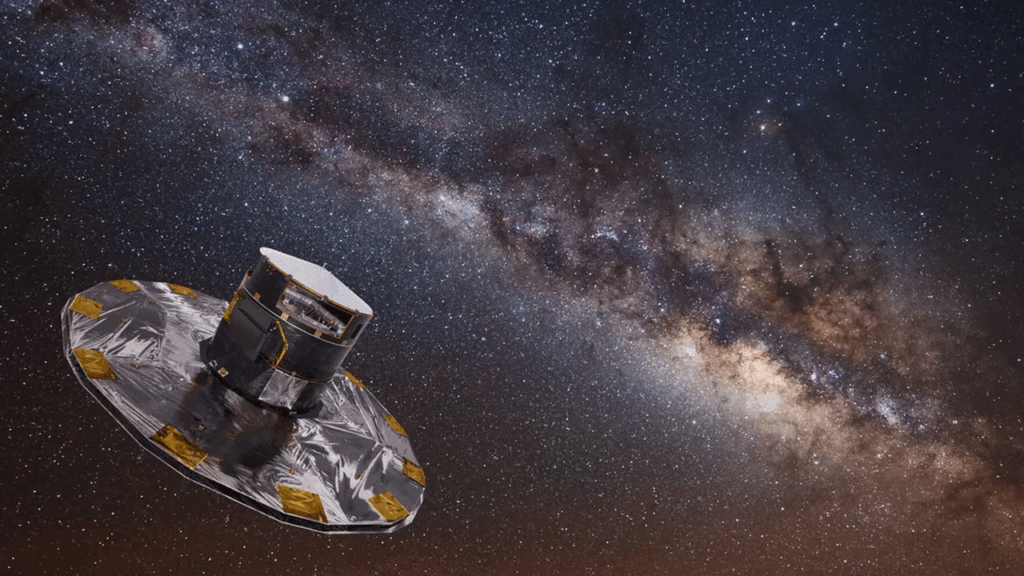Recent astronomical research has brought to light a significant discovery made through the application of a method first theorized by the renowned physicist Albert Einstein. This groundbreaking work reveals a rare and enigmatic planet, dubbed AT2021uey b, which resides on the fringes of our galaxy, specifically in the galactic bulge. This massive, Jupiter-sized gas giant is located approximately 3,200 light-years away from Earth and completes an orbit around its dwarf star in a staggering 4,170 days. This discovery was published in a study in the esteemed journal Astronomy & Astrophysics.
The first hints of AT2021uey b emerged in 2021 when data collected by the European Space Agency’s Gaia telescope indicated the presence of this planet. However, further observations and confirmations were necessary before the astronomical community could fully assert the planet’s specifics. Achieving clarity on such distant celestial bodies requires meticulous research and extensive verification, which the team undertook with great perseverance.
This discovery met the criteria for a remarkable and rare method known as microlensing—an approach that has only previously been utilized three times in the identification of celestial bodies. Microlensing is fundamentally rooted in Einstein’s theory of relativity, which posits that massive objects warp the very fabric of space-time. Dr. Marius Maskoliunas, an esteemed astronomer from Vilnius University and co-author of the study detailing AT2021uey b, explained the complexity and rigor involved in harnessing this method during a statement shared via the science communication platform Phys.org.
Dr. Maskoliunas expressed that employing microlensing requires not only a wealth of expertise but also immense patience and, crucially, a degree of fortuitous alignment in the cosmos. “This kind of work demands attention to detail, extensive data analysis, and an extraordinary amount of waiting for the alignment of the source star and the lensing object,” he commented. Notably, the astronomers contend that ninety percent of the stars in observations are subject to pulsation for various reasons, and only a select few exhibit the microlensing phenomenon.
Microlensing occurs when a massive cosmic body, like AT2021uey b, temporarily positions itself directly in front of a more distant star. As this alignment unfolds, the gravitational field of the planet bends the light emanating from the background star, causing the light to curve and amplify. Astronomers actively search for this momentary magnification of light, as it signifies the presence of the lensing body.
Dr. Maskoliunas provided an illustrative analogy to convey the essence of microlensing, stating, “Imagine a bird flying past you. You don’t see the bird itself, nor do you know its color; instead, you only perceive its shadow. However, from observing that shadow, you can deduce—albeit probabilistically—whether it is a sparrow or a swan and at what distance it is flying.” This metaphor encapsulates the marvel of microlensing and how it can unveil invisible celestial entities.
In contrast to microlensing, the predominant methodologies for discovering exoplanets have included transit photometry and radial velocity techniques. Since 1992, nearly 6,000 planets have been identified through these more conventional means, wherein scientists detect variations in the brightness of host stars caused by the transits of surrounding planets and their gravitational influences.
The discovery of AT2021uey b not only enriches our understanding of the universe but also underscores the evolving landscape of astronomical research and the innovative methods scientists employ to unravel the mysteries of distant worlds. As researchers delve into the vast cosmos, employing advanced techniques like microlensing offers new pathways to understanding the complexities of planetary formation and behavior, expanding the frontiers of scientific knowledge.
In summary, the identification of AT2021uey b via the microlensing technique underscores the resilience and ingenuity of modern astronomy, marrying theoretical concepts with empirical discoveries in the quest to understand our universe’s vastness.











